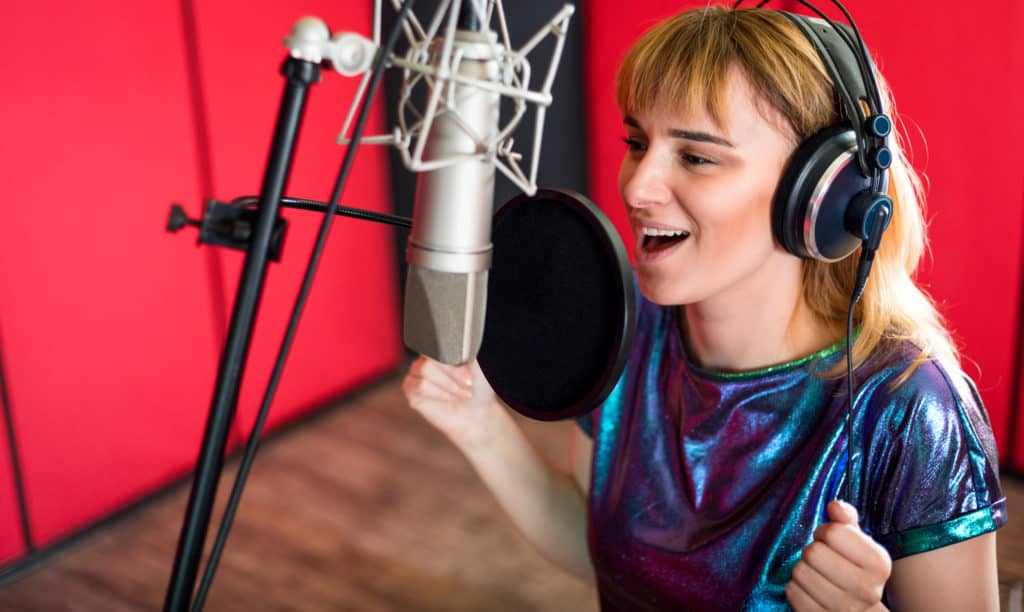I’m often asked, “What kind of voiceovers are there?” We probably all know a bit more about voiceovers than was once the case, but as we become more comfortable with this niche part of the business, you must understand there are different categories for voice actors. They range from commercials and animation to video games, audio book podcasts and more, and all have some unique aspects I hope to spell out for you.
For starters, I’ll break them into two major categories—one part of the business is more agent-driven, and the other part is driven by you—the actor trying to get your foot in the door of V/O. There are classes, seminars, and coaches, as well as articles and YouTube videos, that explore some of these genres, although it really helps to talk to a pro who might have the “whole picture” in mind. Also, before you make any decisions, research where the info is coming from. There are people out there giving advice and perspectives who might not be as much of an authority as they claim, or giving general knowledge that’s not always the way the coasts or major markets would look at it. COVID is shifting many industries, and the same is true in voiceover, particularly on the coasts and major markets like Los Angeles and New York. Many recording studios have been shut down or limited with social distancing restrictions, so they have relied on home studios, which is a topic we’ll delve deeper into next month. This has opened the door to more regional talent getting into the game in all areas—from training and Zoom classes to working out of their home studios across the country.
So let’s break down the main genres within voiceover. There are a lot, so I’ll cover some of them here, and the rest in next month’s article. Here are the main types:
- Commercials
- Animation
- Video Games
- Promos/Trailers
- Narration
- Audio Books
- Dubbing/ADR
- Radio Imaging
- Foreign Language
- Industrial/Corporate Education
- E-learning
You can see, there are lots of ways to slice this pie!
Commercials, Animation, Video Games, and Promos/Trailers are very agent-driven in most markets. Agents, while not always the only way, are usually the best way to be presented with the opportunity to get the jobs. This has opened up much more in the past few years, through resources such as Actor’s Access, Backstage, and other breakdown services, but most of the really good opportunities still come through agents and casting directors. Even if you are able to book jobs on your own, you will eventually want an agent. Sometimes you want the agent first—and it’s that first job that lands you the agent.
Once you get to the point of finding an agent, and even when self-marketing, you will want to have a demo. Make sure you’ve taken some classes and workshops, or land some jobs—whichever comes first—to make your first demo. Do your research on who produces, directs, and can guide you through this process.

Demos are not an inexpensive proposition, and honestly, you pretty much get what you pay for, although the most expensive are also not always the best. Shop around and make sure the one you choose is a good fit. To clarify, demos are short snippets of a highly produced minute or so to show a talent agent, casting agent, or anyone hiring voice actors what you can do. While there are lots of different genres within voiceover each one may need a specific demo. The good news is that you can start with one demo. And if you can only afford one, a good place to start is a commercial demo.
COMMERCIALS: Every potential agent will want you to do a commercial demo. It’s where most of the voiceover work is, and often the most money. When I’m producing a demo, I try to showcase an actor’s strength within the commercial demo. If your voice leans towards animation, throw in a natural character spot. If you’re more of a storyteller, put a commercial spot that leans towards narration.
This is a style I use in each demo I produce, gearing them to bring out the strength in each performer, and giving them very individual focused attention to bring out the best. However, you also need to be careful because it is a big ‘no-no’ to mix the genres. Commercial demos are commercial, and animation demos are for animation. They each have their own nuances, although throwing in something extra can sometimes be beneficial. For example, if you’re a singer, try to have one spot in your commercial demo that features a very short singing sample (as long as it’s commercial). That has helped me get some jobs over the years. If you speak a foreign language fluently, maybe one line in the commercial could be that language. It must still be a commercial and the length; commercial demos run approximately one minute. Even in the past year, 1:15 has been considered too long. Keep it short and simple, showcasing the best of your acting chops.
ANIMATION: Animation can range from Disney to Cartoon Network, with feature films, TV shows, web series—you name it—basically categorized as anything that’s drawn or animated. So there are tons of animated opportunities. It’s a broad field. Even beginners can break into this coveted category, and even land a series, although that’s rare without an agent. To break into animation, you also need a good demo. These tend to be a bit longer because you want to establish the characters in these mini scenes or vignettes. It’s wise not to make it too much longer, but you and your engineer still can have some fun, quick cuts in between longer sections. I tell my students to shoot for 1:30 to 1:45. And I also strongly suggest taking classes. There are online classes if you’re not in New York or Los Angeles, and both have lots of great teachers.
VIDEO GAMES: This genre has its intricacies, but it’s very similar to animation. The difference is that the biggest selling games tend to be very action-oriented and rooted in reality-driven performances. To focus on getting work in that field, a demo geared towards games can help, but I recommend it basically be a variation of an animation demo. Remember about video games: lots of the voice work is nothing more than grunts and commands like, “Go over yon hill and kill Orcs!” or “Fight or die!” Long narrations or soliloquies are usually reserved for top-tiered talent with big followings.

PROMO/TRAILERS: There are some voice talents that make a very good living doing nothing but promos and/or trailers. I put these together because often they are together in an agency representing voiceover talent. With promos, think of them as promoting What’s Next?, Tonight at 8:00…, On the next episode…, How will the kids deal with their new alien mother? Basically, it’s anything promoting something—from a premium cable show, to network, radio, or any digital or broadcast show that is self-promoting. Radio imaging or turnarounds and promos for radio stations also fall under this category. Another note: Narrating and being the voice of a reality-style TV show or even narrating a documentary series—these all fall under this same division.
If show producers need to speed up a story or if they didn’t get the perfect sound bite from a contestant or person being interviewed, they use narration to fill in the gaps. That’s where the narrator comes in. And if you land the “Voice of a Show” job, you will often do the turnarounds to narrate the show. You eventually will need a promo or narration demo, but a good commercial demo should be enough to get you into a door at an agency. The same can be said about a trailer demo. Can anyone say, ‘Don LaFontaine’ who was the king of trailers for decades? Remember hearing, “In a world…” And we can still hear his voice. There are agencies who specialize in trailers, but usually this will fall under the Promo/Trailer category at most agencies. Getting these jobs usually requires an agent.
But even before you do a demo or look for an agent, find your “money voice.” You can do this by asking fellow actors, casting directors, producers, writers, an acting coach, or just an honest colleague. Don’t try to be all things to all people. Go online, find talent agencies that deal with animation and commercial voice artists and listen, listen, listen to every demo you can. Some will be weak, some strong, but you can learn from them all. And you’ll also hear the range of working V/O artists on how they approach a character.
Once you land an agent, know that the marketing, finding work, and self-promotion doesn’t just go away. You will continue to get bigger opportunities, but you will still need to be an active participant. I’ll also leave you with this: don’t be discouraged when I say you need an agent for these V/O categories. While it helps, there are lots of people who, without an agent, walked into a studio as a favor to a friend and wound up landing a major campaign or animated character! It can happen. I booked my first commercial spot for Pepsi by approaching an ad agency and saying “Hi, I’m new in town, here’s my headshot,” and the next day, they called me in for four Pepsi ads.
Next month, I’ll go over the second group of categories for voiceover. Stay tuned for Part Two!
